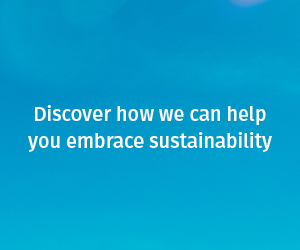Nissan Leaf lights up Canberra
.jpg?h=666&iar=0&w=1000&rev=b50305e4aae9455e89b186cd556c9a01&hash=22DD871FC615DDAD68DB9A363E2C5BAD)
The ACT government initiative will showcase the LEAF electric vehicle’s (EV) ability to supply energy needs, and even deliver power back to the grid, thanks to its bi-directional charging capability.
The Leaf is the only factory-delivered and warranted vehicle-to-grid (V2G) capable electric vehicle on the market and this will be the first time V2G has been trialed in Australia, according to Nissan.
The company says V2G technology effectively transforms the Leaf into a total energy solution, ensuring its battery doesn’t just store power for driving, but can also use that energy to run a home or commercial site, or to feed power back to the grid.
In total, 51 Nissan Leaf EVs equipped with V2G technology will be deployed across the ACT in a precursor to the customer launch of the technology in Australia later this year.
The vehicles will form part of the ACT Government fleet and will provide Frequency Control Ancillary Services (FCAS) to the National Electricity Market.
.jpg?rev=48f6d93f461c447f869fbc10e4d36a94&hash=E022A4B4EED23BDDDAB6B5F8478DC59B)
The FCAS system refers to the energy used to keep a power grid operating at its optimum levels at times of fluctuating demand.
It’s this injection or reduction of power that prevents instability in the grid that can lead to blackouts.
The trial will focus on the Leaf’s ability to provide energy to the grid to help stabilise the load in peak and off-peak periods.
“As the brand with the only V2G-capable vehicle from factory on the Australian market today, we are exceptionally proud to support this project, and to introduce this technology to Australia,” said Nissan Australia Managing Director Stephen Lester.
“The Nissan Leaf not only offers an exciting EV driving experience, it goes so much further by integrating into the energy system.
“Nissan has been a global leader in this space, with several successful trials conducted in overseas markets, realising in Australia it is an important milestone.”
The trial previews a near future in which Australian homes could essentially be off the grid, transforming electric vehicles to mobile energy solutions.
For customers with solar panels, the LEAF’s 40kWh battery is able to store solar energy during the day, and then use that energy to supply a home’s power needs at night, unlocking both zero-cost mobility and zero-cost home energy, according to Nissan.
Alternatively, customers who use a workplace or public site to charge their vehicles could use that power to supply their homes.
A parked car could even become a revenue-generating asset for its owner by providing support to the energy grid by feeding power back into the grid and providing ancillary services, the company says.
“With more people working from home currently, with a Nissan Leaf in the driveway, a household could significantly reduce their power bills by using their vehicle as a battery,” Mr Lester said.
“And if they have solar panels, they can maximise their use of renewable energy, and still have an exciting zero-emissions car to drive.”

The project is being introduced to Australia through Nissan’s support of the Realising Electric Vehicle Services (REVS) project, which has been supported by the Australian Renewable Energy Agency (ARENA) as part of its Advancing Renewables Program.
The REVS project brings together a consortium of academic, transport and electricity system partners to deploy the V2G service, including ActewAGL, the Australian National University (ANU), JET Charge, Evoenergy, SG Fleet and Nissan.
The Nissan Leaf has sold more than 470,000 units worldwide and vies with Tesla’s Model 3 for the title of the world’s best-selling electric car.
It is one of Australia’s most affordable EVs, with a purchase price of $49,990 (MRLP), and this year has sold 176 units. It has an indicative driving range of 270km between fills of its 40kWh battery.
Related topics
Things to note
The information in this article has been prepared for general information purposes only and is not intended as legal advice or specific advice to any particular person. Any advice contained in the document is general advice, not intended as legal advice or professional advice and does not take into account any person’s particular circumstances. Before acting on anything based on this advice you should consider its appropriateness to you, having regard to your objectives and needs.
Insurance Products (excluding Travel Insurance) are issued by RACQ Insurance Limited ABN 50 009 704 152 (RACQI) and arranged by its agent, RACQ Distribution Services Pty Ltd (RDS) ABN 35 116 361 650, AFSL 567130 and RDS' authorised representatives (including RACQ Operations Pty Ltd ABN 80 009 663 414, AR No. 234978 (RACQO). Conditions, limits and exclusions apply. RDS and RACQO are in the RACQ group of companies. One of the companies in the RACQ group of companies has a minority shareholding in RACQI.
RDS and RACQO have not taken your personal objectives, circumstances or needs into account when preparing advice regarding insurance products and you will need to consider whether the advice is appropriate for you. Read the Product Disclosure Statement (PDS) and any applicable Supplementary PDS before making a purchase decision on this product. You can also access our Target Market Determinations on this website. RDS receives a commission from RACQI for the policies it arranges. RACQO receives fees paid for services it provides to RDS. Further details about remuneration are available on request prior to purchasing.
Banking and loan products issued by Members Banking Group Limited ABN 83 087 651 054 AFSL/Australian credit licence 241195 trading as RACQ Bank. Terms, conditions, fees, charges and lending policies apply. This is general advice only and may not be right for you. This information does not take your personal objectives, circumstances or needs into account. Read the disclosure documents for your selected product or service, including the Financial Services Guide and the Terms and Conditions, and consider if appropriate for you before deciding.
Except for RACQ Bank, any RACQ entity referred to on this page is not an authorised deposit-taking institution for the purposes of the Banking Act 1959 (Cth). That entity’s obligations do not represent deposits or other liabilities of RACQ Bank. RACQ Bank does not guarantee or otherwise provide assurance in respect of the obligations of that entity, unless noted otherwise.
RACQ Bank subscribes to the Customer Owned Banking Code of Practice which establishes higher standards than the law requires. The Code reflects modern consumer expectations and developments in approaches to issues such as consumer vulnerability, guarantors, and supporting customers through financial hardship. Please read our Customer Owned Banking Code of Practice page for more information.
RACQ Operations Pty Ltd (ABN 80 009 663 414 AR 000234978) and Members Travel Group Pty Ltd (ABN 45 144 538 803 AR 000432492) are acting as an Authorised Representative of the issuer of the insurance, Tokio Marine & Nichido Fire Insurance Co., Ltd. (ABN 80 000 438 291 AFSL 246 548). Any advice set out above is general in nature only, and does not take into account your objectives, financial situation or needs. Before purchasing any travel products, please consider the RACQ Travel Insurance Product Disclosure Statement (PDS) and the Target Market Determinations (TMDs) that apply to these products. Whilst the PDS outlines the Terms and Conditions of these products, the TMDs outline the intended class of customers that comprise the target market for these travel products. This will allow you to consider which products best suit your objectives, financial situation and needs and consider the products appropriateness to your personal circumstances. TMDs also outline matters involving the distribution and the review of these products. The PDS, Supplementary PDS and TMDs for each travel product can be found here.

